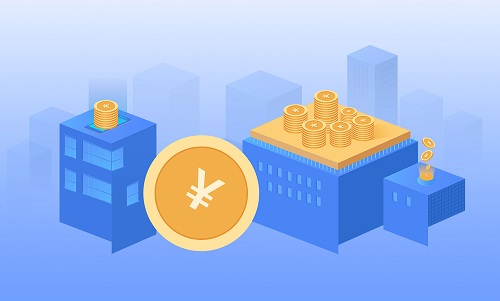These Are the Only 3 Stocks I've Been Buying Since 2023 Began | The Motley Fool|独家
来源:个人图书馆-兰亭文艺 2023-06-18 16:10:44
Compared to other asset classes, the stock market is tough to top. On an annualized basis, stocks have handily outperformed bonds, gold, oil, housing, and bank certificates of deposit (CD) over long stretches.
Over shorter timeframes, the predictability of the major indexes can be compared to a coin flip. In 2021, the Dow Jones Industrial Average, S&P 500, and Nasdaq Composite were practically unstoppable. This was followed up by all three indexes plummeting into a bear market in 2022. Since 2023 began, large-cap tech and other growth-oriented indexes are, once again, unstoppable.
 (资料图)
(资料图)
I"m a firm believer in the power of long-term investing and, to take a page out of Warren Buffett"s book, wouldn"t dare bet against America or the stock market over extended timelines. But I"m not a big fan of the supposed "new" bull market for an assortment of reasons that I recently outlined. Though I have no intention of selling my existing holdings, putting new money to work has been difficult without seeing much in the way of value.
Image source: Getty Images.
There are, however, three stocks that have caught my eye this year. Since 2023 began, these are the only three stocks I"ve bought for my own portfolio that absolutely scream "Value!"
PayPal HoldingsThe stock I"ve deployed the most money into this year -- to be more precise, over the past four to five weeks -- is fintech leader PayPal Holdings (PYPL 0.33%).
Motley Fool ReturnsMarket-beating stocks from our flagship service.
Stock Advisor Returns496%S&P 500 Returns130%Calculated by average return of all stock recommendations since inception of the Stock Advisor service in February of 2002. Returns as of 06/16/2023.
Discounted offers are only available to new members. Stock Advisor list price is $199 per year.
Join Stock Advisor Cumulative Growth of a $10,000 Investment in Stock AdvisorCalculated by Time-Weighted Return since 2002. Volatility profiles based on trailing-three-year calculations of the standard deviation of service investment returns.
PayPal has endured one heck of a roundtrip. Shares catapulted to north of $300 during the height of the COVID-19 pandemic. They have now shed approximately 80% of their value on the heels of increasing competition and concerns about historically high inflation. The latter is worrisome in the sense that higher inflation reduces people"s discretionary spending power. Since PayPal is a usage-based operating model, fewer transactions wouldn"t be good news.
But from what I"ve seen, the worries regarding PayPal are largely overblown. Although growth has slowed for this industry leader, its key performance indicators continue to push notably higher.
Invest Smarter with The Motley FoolJoin Our Premium Members Receiving…New Stock Picks Each MonthDetailed Analysis of CompaniesModel PortfoliosLive Streaming During Market HoursAnd Much MoreGet Started Now NASDAQ: PYPL PayPal Today"s Change (0.33%) US$0.22 Current Price US$66.07 PYPL Key Data Points Market Cap $73B Day"s Range US$65.71 - US$67.15 52wk Range US$58.95 - US$103.03 Volume 6,718,864 Avg Vol 15,852,782 Gross Margin 40.75% Dividend Yield N/AFor example, gross domestic product for the U.S. economy retraced during the first and second quarters of 2022. Despite this, currency-neutral total payment volume (TPV) traversing PayPal"s digital networks (primarily PayPal and Venmo) still rose by 13% in 2022 and another 12% during the March-ended quarter in 2023. Think about it this way: If TPV can sustain double-digit growth through historically high inflation and an uncertain economic environment, imagine how strong TPV will be when the U.S. enters another one of its multiyear economic expansions.
PayPal"s user engagement has been steadily improving, too. Active accounts were averaging fewer than 41 transactions over the trailing 12-month (TTM) period when 2020 came to a close. As of the end of March 2023, these same active accounts were averaging more than 53 transactions over the TTM.
I"d also add that the digital payments landscape is still very much in its infancy. Adoption is growing, with Boston Consulting Group (BCG) forecasting a sixfold increase in global fintech revenue from $245 billion in 2022 to $1.5 trillion by 2030. Even if BCG"s estimate is only somewhat in the ballpark, the consensus is for sustained double-digit growth in the fintech arena as adoption picks up.
Lastly, PayPal is historically cheap. Shares can be picked up right now for about 11 times forward-year consensus earnings. That compares to an average forward-year price-to-earnings (P/E) ratio of 35 over the past five years. In other words, there"s a very good reason I"ve made PayPal a top-10 holding.
NYSE: USB US Bancorp Today"s Change (-0.18%) -US$0.06 Current Price US$33.23 USB Key Data Points Market Cap $51B Day"s Range US$33.00 - US$33.58 52wk Range US$27.27 - US$49.95 Volume 3,415,738 Avg Vol 19,335,281 Gross Margin 0.00% Dividend Yield 5.71%U.S. BancorpA second stock I"ve been purchasing since this year began is U.S. Bancorp (USB -0.18%), the parent of the more familiar U.S. Bank.
U.S. Bancorp was clobbered in March as a short-term regional banking crisis came into focus. The failure of SVB Financial"s Silicon Valley Bank, followed by Signature Bankand First Republic Bank, set off a temporary wave of worry that bank runs and deposit shifts could hurt other regional banks. U.S. Bancorp dealt with added scrutiny, given that its recently completed acquisition of Union Bank from Mitsubishi UFJ Groupreduced its common equity tier 1 capital ratio.
Although bank stocks do require an attentive eye in the current economic environment, I believe U.S. Bancorp is one of the best of the bunch among regional and large bank stocks.
To start with, U.S. Bancorp"s deposit balance shrank by just $3 billion to $505 billion following the failure of Silicon Valley Bank on March 8, 2023. That"s a negligible decline for the fifth largest bank by deposits in the U.S., and doesn"t indicate anything abnormal in deposit flows. The company explained this decline as nothing more than seasonal outflows and outflows tied to its Union Bank deal. In other words, there aren"t any signs of smoke or fire.
Something else to consider is that U.S. Bancorp"s management team has, historically, erred on the side of caution. Rather than getting caught up in riskier derivative investments, the company has focused on the boring, but highly profitable, aspects of banking: Growing loans and deposits. This more traditional approach has helped U.S. Bancorp pretty consistently deliver return on assets (ROA) of more than 1% -- the benchmark ROA figure most banks aim for.
What"s more, U.S. Bancorp is making waves with its digital engagement trends. Though most banks are investing in digitization initiatives to promote online and mobile banking, few (if any) have had as much success as U.S. Bancorp. As of the end of August 2022, 82% of active customers were banking online or via mobile app, and 62% of total sales were digital. Digital transactions are considerably cheaper for banks than in-person or phone-based interactions.
Shares of U.S. Bancorp can be bought for below 7 times forward-year earnings, just above its book value, and it sports a nearly 6% dividend yield. All three of these datapoints are highly attractive given its historically superior operating performance.
Image source: Sirius XM.
Sirius XM HoldingsAside from PayPal and U.S. Bancorp, the only other stock I"ve been buying since the beginning of the year is satellite-radio operator Sirius XM Holdings (SIRI 2.09%).
Following roughly five years in a relatively tight trading range, Sirius XM stock broke lower in February as fears mounted about the state of the advertising industry. Radio companies are typically reliant on advertising revenue to fuel their business. However, ad spending tends to pare back well ahead of an actual economic downturn taking place. With numerous indicators and metrics warning of a possible U.S. recession, investors took this as an opportunity to run for the exit from Sirius XM.
But there"s one important factor skeptics continually overlook: Sirius XM isn"t like a traditional radio operator.
NASDAQ: SIRI Sirius XM Today"s Change (2.09%) US$0.08 Current Price US$3.91 SIRI Key Data Points Market Cap $15B Day"s Range US$3.83 - US$3.93 52wk Range US$3.32 - US$6.85 Volume 7,121,622 Avg Vol 15,700,561 Gross Margin 43.59% Dividend Yield 2.47%In the March-ended quarter, Sirius XM generated only 17.5% of its $2.144 billion in sales from advertising -- and this predominantly derived from Pandora, which it acquired in February 2019. Though ad weakness could drag on Sirius XM in the short run, the key to its success is that it generates close to 79% of its revenue from subscriptions. Whereas advertisers are quick to pare back their spending when they see even the slightest hint of economic weakness, subscribers are far less likely to cancel. It means Sirius XM should be able to handle economic downturns better than other radio providers.
To build on this point, Sirius XM is the only legal satellite-radio operator in the U.S. As a legal monopoly, it has certain pricing advantages that can help it grow its top and bottom line, as well as outpace the prevailing rate of inflation.
Another reason I"m a big fan of Sirius XM is the company"s somewhat predictable cost structure. Despite royalty costs being different from one quarter to the next, line items like transmission expenses and equipment costs are transparent. No matter how many new subscribers Sirius XM adds, its transmission costs aren"t going to climb. In my view, this sets the company up for a steadily expanding operating margin over the long run.
Even though Sirius XM"s high-growth heyday is long gone, it"s a company that can still move the needle with its programming, pricing power, and relatively transparent cost structure. At less than 13 times forward-year consensus earnings, it"s about as cheap as it"s ever been as a publicly traded company.
Wondering Where to Invest$1,000 Right Now?
Before you put a single dollar into the stock market, we think you’ll want to hear this.
Our S&P/TSX market beating* Stock Advisor Canada team just released their top 10 starter stocks for 2023 that we believe could supercharge any portfolio.
Want to see what made our list? Get started with Stock Advisor Canada today to receive all 10 of our starter stocks, a fully stocked treasure trove of industry reports, two brand-new stock recommendations every month, and much more.
Click here to learn more.
























































































































